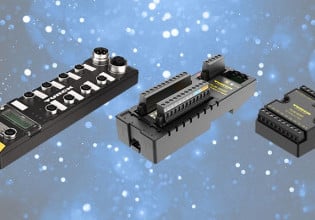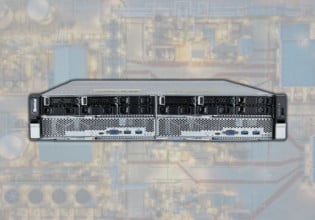SmartScan: Could it Improve the Quality of Metal 3D Printed Parts?
A University of Michigan team recently created a new control software called SmartScan, which promises to increase speed and reliability of printing (particularly in metal) by optimizing toolpath based on material properties.
The University of Michigan has recently developed a new software capable of improving control for more reliable laser powder bed fusion (PBF) additive manufacturing. Powder bed fusion is a type of 3D printing used to make intricate parts that other types of 3D printing may not have the accuracy to produce, and it is one of the common methods of printing using metal or metal composites. The new software, called SmartScan, is capable of reducing defects caused by uneven heating and helps to speed up manufacturing time compared to previous PBF methods.

Laser powder bed fusion is emerging as a common method of creating 3D metal parts with geometry that is difficult with traditional machine processes. Image used courtesy of Proto3000
Laser powder fusion works by using a laser to fuse plastic or metal powder. The heat from the laser melts and fuses the manufacturing material. As a solid shape is generated in a thin layer, a new layer of powder is placed, creating the desired part one layer at a time. The excess powder is removed at the end of the process. Heat concentrations can lead to part distortion, especially within parts that have very thin solid features. Heat dissipation can be a problem in these features, with the laser energy often fusing material on either side of the desired feature.
SmartScan Creates Faster Production Rates
The SmartScan software was able to show a 41% improvement in heat distribution while maintaining a 47% reduction in heat-related deformations according to a recent study. The software shows a lot of promise when it comes to improving powder bed fusion print times. It allows the printer to operate at a higher speed since heat is spread more evenly through the part. The reduction in hot spots reduces warping (a product of thermal expansion where material physically changes shape with heat), and allows the machine to operate faster without the need to let heat dissipate by means of a slower print speed. The software also reduces post-processing time since the prints are more accurate with fewer heat-related defects. More accurate prints mean that less time is necessary to produce quality prints in the post-processing phase of manufacturing.

SmartScan enables better laser path geometries based on the physical and thermal properties of the material and the part being created. Image used courtesy of University of Michigan
How SmartScan Works
SmartScan works by analyzing the shape of the part to find how heat will flow through it based on geometry. It uses the thermal properties of the material being printed in order to more accurately understand the places where heat will dissipate at different rates. From this analysis, it is able to keep hot spots to a minimum without having to resort to guesswork. It improves accuracy by using known conductive and convective heat transfer rates for given materials.
In order to test the effectiveness of SmartScan technology, a lab test was conducted using two identical stainless steel plates. Each plate was laser imprinted with the same pattern. One plate was imprinted using traditional methods while the other was imprinted with SmartScan technology. The plate that used SmartScan consistently showed less deformation and warpage. Judging from the test results, the team is confident they will be able to scale the technology to full-size metal 3D prints. They are planning to add an infrared camera to provide real time feedback to the system for more accurate results. They will also add the thermal properties of metal and plastic fusing to the program. The university has applied for patent protection and is currently looking for partners to bring the technology to market.

SmartScan enables laser path geometry to be altered, resulting in better heat distribution and less deformation (warping). Image used courtesy of Science Direct
Summary
SmartScan is still in the testing phases, but looks to be a promising new addition to the world of 3D printing. Powder bed fusion printing is an accurate way of creating plastic or metal prints. The addition of the University of Michigan’s technology hopes to bring further accuracy to the process while reducing post-processing time. The product has the possibility of reducing manufacturing times and bringing easier access to the printing of parts for machine maintenance and prototyping research.






